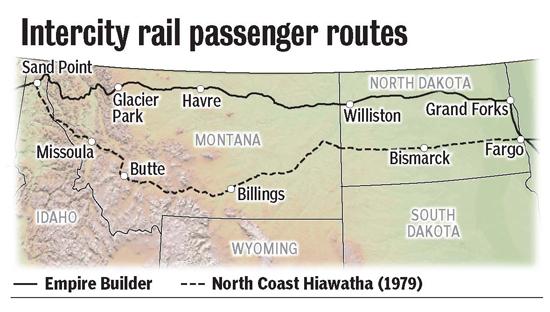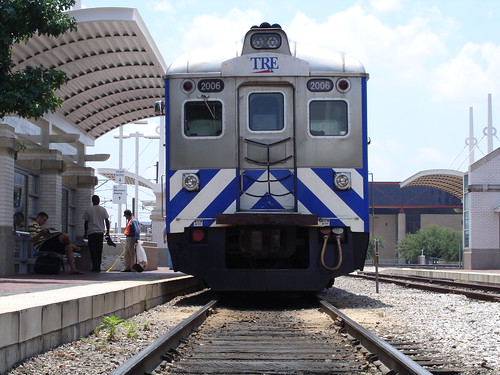kmillard wrote:
2. Virtually no competition from aviation or bus service on much of it's proposed route. (And if they haven't done it now, they would be even less likely with a popular train in the mix.)
3. The promotion of tourism as this would be the closest rail service (or public transportation of ANY kind) to Yellowstone National Park.
Not true.
To the contrary, the proposed North Coast Hiawatha route has parallel bus service - with multiple frequencies - along the entire route, except at Helena, where the buses follow I-90 through Butte, and at Paradise and Sandpoint, where again the buses follow the Interstate.
Air service along the North Coast Hiawatha is relatively good compared to most other areas in the country, really. If one accepts that Mandan is served by the Bismarck airport and that East Auburn, Washington would be served by the nearby Seattle-Tacoma International Airport, then only 5 of the proposed 17 new stops (per the study) would not have air service: Valley City, ND; Forsyth, MT; Livingston, MT; Paradise, MT; Ellensburg, WA. Valley City is only about 60 miles from Fargo and 35 from Jamestown; Livingston is about 35 miles from the Bozeman airport; Forsyth has less than 2,000 people and is 45 miles from Miles City; Paradise has less than 500 people; is about 35 miles from Yakima, the closest airport. The Bismarck, Billings, Bozeman, Helena, and Missoula airports have service to three or more hubs.
As for the North Coast Hiawatha being the closest public transportation of any kind to Yellowstone: The train would stop at Livingston, about 50 miles from the north entrance at Gardiner. Greyhound and Rimrock Trailways already serve Livingston. The West Yellowstone Airport is about 10 miles from the west entrance and sees summer service from Salt Lake City. The Jackson, Wyoming Airport is served by multiple carriers and is about the same distance from the south entrance to the park as is Livingston from the north. The Cody, Wyoming airport has year-round service and is a similar distance from the east entrance. The Bozeman airport (in Belgrade), though slightly further than these others from Yellowstone, has excellent service and is probably the major airport serving Yellowstone because it serves the Big Sky Ski Area (a major development) on the way to Yellowstone via US 191.
So, to the contrary, Yellowstone National Park currently has fairly good access, with or without a passenger train.





